One step closer to a swine brucellosis vaccine
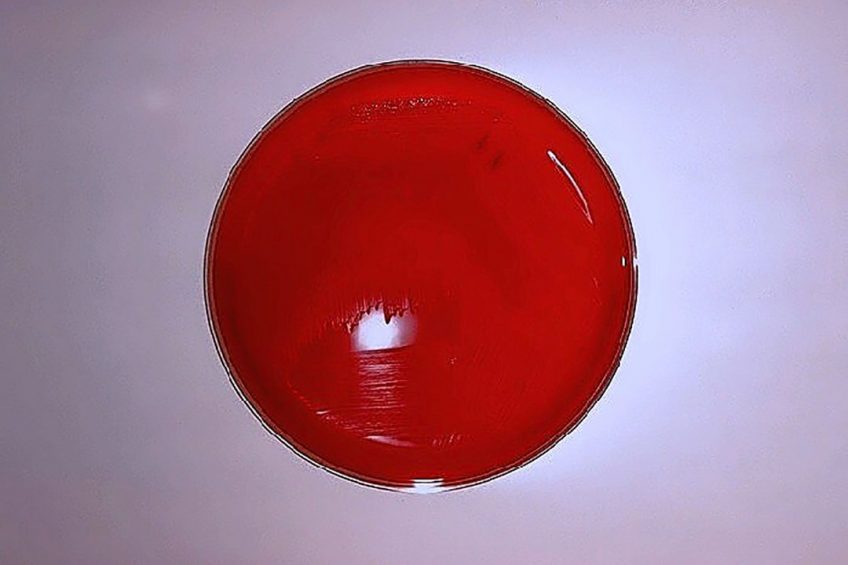
An Argentinian research team is working on a vaccine that could prevent the Brucella suis infections in swine and its potential subsequent transmission to humans, without secondary effects of current treatments.
Pablo Baldi is professor of immunology at the Faculty of Pharmacy and Biochemistry of Buenos Aires University (UBA). He is in charge of the research team that works on the development of a vaccine, protecting swine from Brucella suis infections, responsible for brucellosis. The research is being done in collaboration with the Leloir Institute, also located in Buenos Aires, Argentina.
No efficient Brucella suis vaccines
In correspondence with Pig Progress, Prof Baldi said, “While vaccines against cattle, goat and sheep brucellosis are currently being used with different degrees of success, up to date efficient vaccines haven’t been developed to protect swine from Brucella suis infections.”
Prof Baldi highlighted the importance of closing that gap, as swine brucellosis not only could lead to production problems for breeders, but it is also a zoonosis. He said, “Vaccination is the main tool to reduce the infection in animals, avoiding this way its transmission to humans.”
Thanks to the collaboration with Dr Ángeles Zorreguieta’s team, from the Leloir Institute, the research brings a different approach than the development of other vaccines currently in use. Prof Baldi said, “Those vaccines are based on Brucella strains that are attenuated but not harmless, which entails the risk of accidental human infections during vaccination and limits their use in animals due to the risk of abortion in gestating females.”
 Pig health
Pig health
Read more about pig health in the Pig Progress Health Tool.
Developing an acellular vaccine
That is why the UBA investigation focused on developing an “acellular vaccine,” the content of which is limited to certain components of Brucella suis that are able to generate a protective immune response. Prof Baldi said: “We designed an intra-nasal vaccine based on a bacterial protein called BtaF, which generated excellent protection from the Brucella suis infection in a mouse model.”
The BtaF protein was discovered by Dr Zorreguieta’s team. It intervenes in the capacity of adherence of Brucella suis to host’s cells and the substance that surrounds them (extracellular matrix), which is key to the bacteria’s infectiousness. UBA staff started from the hypothesis that vaccination with the BtaF protein “would induce an antibody response in animals, which would be able to block the bacteria’s adherence and therefore their capacity to infect cells. Additional cell-mediated immune mechanisms could join this process.”
Progress towards the vaccine
During the mice trial the researchers observed a 1,000-fold reduction of viable bacteria in the spleens of animals vaccinated with the BtaF recombinant protein, as opposed to the non-treated mice.
Although the vaccine is still on a preliminary phase of evaluation, Prof Baldi highlighted the importance of the study, if its efficiency on swine where to be confirmed.
He said, “It could constitute an important tool to the reduction and eventual eradication of swine brucellosis,” which not only would avoid economic losses associated with the drop in production due to the disease, but it also “would have a benefit on human health, since it would avoid the transmission of Brucella suis to the staff involved in the raise, transport and chores of swine.”
A recent scientific article in Frontiers in Immunology about this topic was authored by Florencia Muñoz González, Iván M. Alonso Paiva, Pablo C. Baldi and Mariana C. Ferrero, University of Buenos Aires, Argentina; Gabriela Sycz and Ángeles Zorreguieta, the Leloir Institute, Buenos Aires, Argentina; and Dirk Linke, University of Oslo, Norway.
 Beheer
Beheer
 How to do a clinical pig examination?
How to do a clinical pig examination?
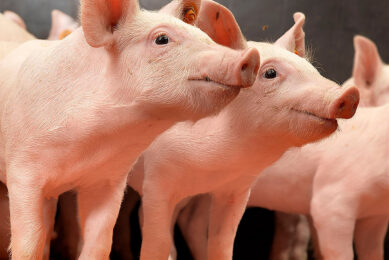
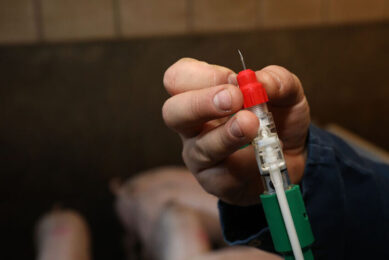
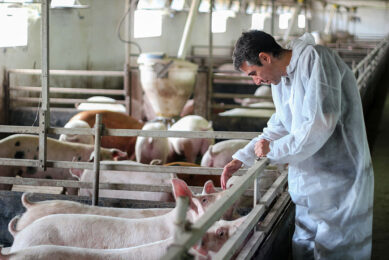
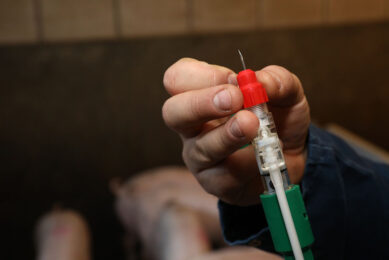



 WP Admin
WP Admin  Bewerk bericht
Bewerk bericht